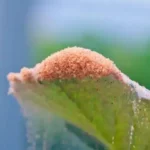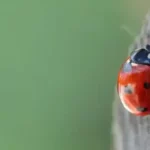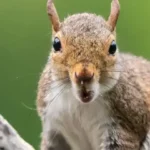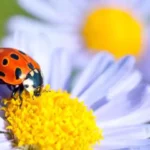Our garden is our paradise. Unfortunately, we are not the only ones who enjoy this wonderful space. Birds, rabbits, and other troublesome pests see it as bliss too. As devoted growers, we invest time and money into our hobby and must protect our precious harvests. Picture your food oasis where plants mature without being bothered. Image your vegetable garden pest control working throughout each season. Unlock the secrets to fresh, thriving homegrown vegetables by keeping these pesky critters at bay.
Once you identify pests like aphids, slugs, snails, and Colorado potato beetles invading your turf, it’s time to reclaim your garden. Attract beneficial insects like bees, ladybugs, and ground beetles by growing colorful flowers in which they can feed and take shelter along with a viable and accessible water source. Build physical barriers, practice integrated pest management (IPM), and maintain a tidy and well-organized garden for effective pest control.

Even though there are many natural and organic pest control options for the home grower, in this article, you’ll discover how to identify the mischief-makers who seek to damage your plants and harness the power of helpful insects to keep their numbers in check.
Plus, I’ll provide valuable knowledge on some easy-to-follow techniques that will help you protect your plants and redeem your turf. Get ready to become a gardening expert and discover the secrets to a successful and pest-free home garden.
Humble Highlights
- Identify the 5 most common garden pests you’ll likely encounter in your garden so you can effectively recognize, treat, and stop these would-be conquerors BEFORE they destroy your garden!
- Avoid feeling helpless, and instead, discover several proven natural ways to fight back against harmful critters to seize back your food turf and crush invading colonies.
- Save time and money by following this easy pest management process and breakthrough stubborn insect invasions so you can maintain the health of your garden and enjoy exceptional yields.
Identifying Common Vegetable Garden Pests
One of the challenges faced by vegetable gardeners is dealing with common garden pests. These tiny invaders can destroy your greenery and quickly undo all your hard work. Identifying them is the first step in effectively avoiding and safeguarding your garden. The most common garden marauders include:
- Aphids
- Slugs And Snails
- Whiteflies
- Colorado Potato Beetles
- Cucumber Beetles
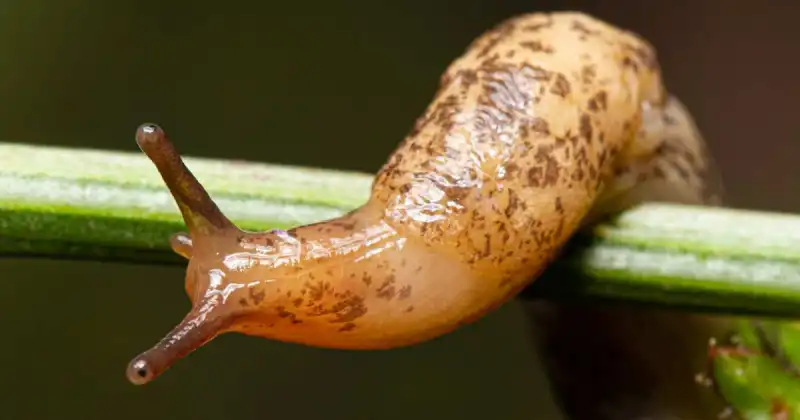
Let’s take a look at each of these pesky raiders to help you better protect your space.
Aphids
Aphids are tiny, soft-bodied insects in various colors like green, black, or brown. You will often spot them hanging out on the undersides of leaves, congregating up stems and stalks, or forming compact clusters near the growing tips of plants.
These sneaky little critters habitually attack your garden by sucking the sap out of the plants and the unopened buds of flowers. As aphid numbers swell, you’ll notice their tell-tale destruction by the distinguished mottled discoloration in your plant’s foliage, resulting in twisted and stunted growth and, ultimately, death. If left unchecked, aphids will spread throughout your garden, leaving catastrophic destruction. 1
Slugs And Snails
Slugs and snails are nocturnal pests that leave behind shimmering trails. Seeing these trails glisten in the morning light will alert you to their presence in your garden. These slimy critters have soft bodies and are known for devouring leaves, stems, and young seedlings. They prefer cool and moist environments while often hiding in shady areas. If you grow your vegetables in containers, look under a few to see if these slimeballs are present. 2
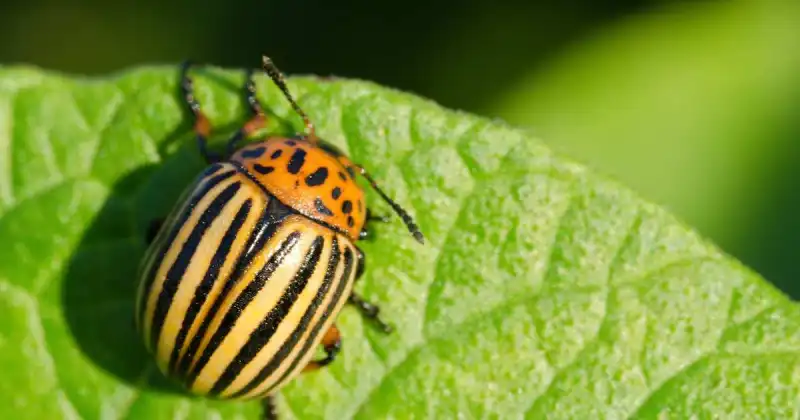
Whiteflies
Whiteflies are tiny, winged insects that resemble tiny white moths. They can be found on the undersides of leaves and fly off in a group when disturbed. Like aphids, they feed on plant sap, causing yellowing or bronzing discoloration of foliage, resulting in a sticky substance known as honeydew deposited on the leaves. If not treated properly, your once-flourishing plants will wilt and have difficulty producing abundant and healthy yields.
Colorado Potato Beetles
Colorado potato beetles are hungry little bugs that love to chew on potatoes’ leaves, which can be a big problem. When their numbers swell and their destruction becomes so great, the plants can’t make food properly as photosynthesis is disrupted. The resulting outcome is weak and patchy greenery with stunted growth as the plant focuses more on survival than vegetable production.
Check Lowest Prices On The Best Garden Pest Books
Cucumber Beetles
Cucumber beetles are maddening bugs that, like potato beetles, love eating and making holes in leaves. However, one big problem with the cucumber beetle is that it can spread diseases to the plants they munch on. They carry bacteria and viruses that can cause diseases like bacterial wilt and cucumber mosaic virus. These diseases can make your vegetables droop, look sickly, and even die.
Now that we have identified the primary garden culprits, let’s discuss how to get of them before our plants succumb to their destruction. Below are a few common ways and methods to eliminate these harmful intruders.
Beneficial Insects And Bugs
There are plenty of beneficial garden insects that will work hard on your behalf to protect your plants. These friendly defenders include:
- Bees
- Ladybugs
- Hoverflies
- Ground Beetles
- Green Lacewings
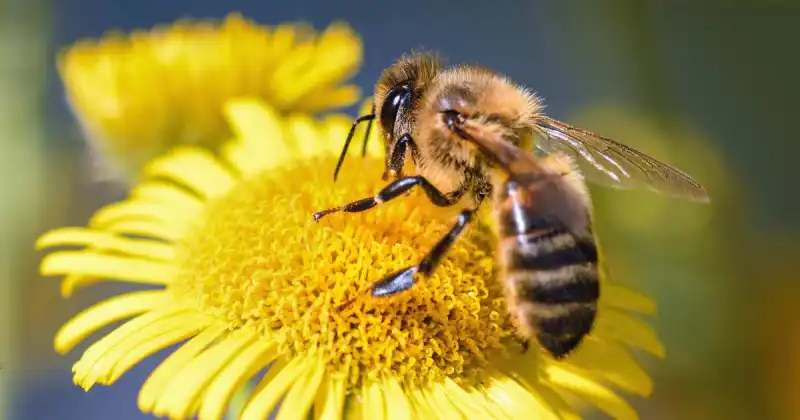
As humble gardeners, let’s embrace the power of nature’s little helpers! These beneficial insects are essential in pest control and can be our garden superheroes if we provide the ideal environment.
Like tiny warriors, they work tirelessly to block those unwanted invaders that look to our garden as an all-night Vegas buffet. These beneficials can be natural predators, pollinators, or pest controllers themselves. It’s like having a miniature army of guardians in your backyard! Below are some of the common beneficial insects you must have.
Check Lowest Prices On The Best Borage Seeds
Busy Bees
Let’s talk about our buzzing buddies, the bees. Bees are not just honey producers but are excellent pollinators that help plants reproduce and thrive. By attracting bees into your green space, you invite diligent and industrious workers into your veggie garden that help promote healthy and robust plants and flowers.
To attract bees, ensure you have bee-friendly plants and flowers scattered throughout your area, including sunflowers, lavender, Borage, and coneflowers. Also, it’s a great idea to have a good water source for your winged companions and nesting sites to raise their young such as nesting blocks or bee houses.
Check Lowest Prices On The Best Bee And Beneficial Insect Houses
Pretty Ladybugs
Ladybugs are charming, eye-catching little beetles known as nature’s pest control experts. They can feed up to 50 (or more) unwanted pests in just one day. They have a big appetite for annoying bugs like mealybugs, spider mites, and aphids. It is like they are the fancy chefs of the insect world.
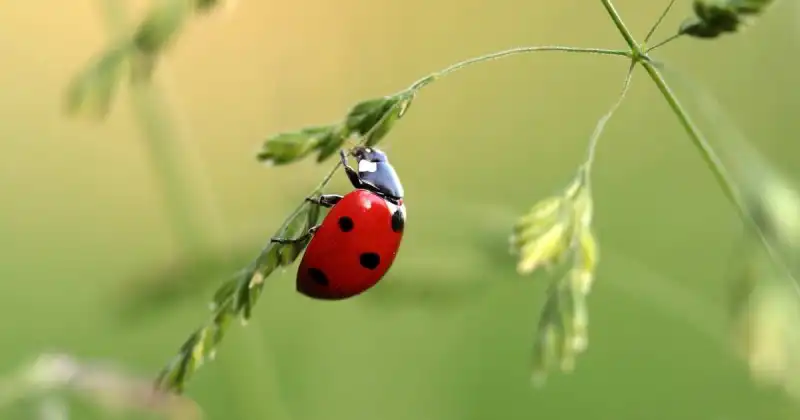
Ladybugs feed on both insects and pollen or nectar from flowers. Include plants like dill, fennel, dandelions, marigolds, and cosmos that produce abundant pollen and nectar to attract ladybugs to your garden. Placing shallow dishes or saucers filled with water throughout your space helps provide them with easy access to hydration. You’ll also want to put pebbles or small rocks in the shallow water so your lady beetles don’t inadvertently drown. 3
Check Lowest Prices On The Best Live Ladybugs
Although there are times when chemical synthetics must and should be used to protect the overall health of your garden, I always suggest using natural methods first to preserve the integrity of your greenery.
Darting Hoverflies
Hoverflies resemble small bees or wasps and make excellent allies, and master pollinators, darting from flower to flower with precision. As they sip nectar, they inadvertently transfer pollen, assisting in the natural reproduction of various plants. But that’s not all! These clever critters also have a secret weapon. Their larvae, often called “aphid lions,” have greedy appetites for aphids and other small garden predators.
Check Lowest Prices On The Best Marigold Seeds
Scatter nectar-rich flowers and plants in your garden, including marigolds, alyssum, calendula, and lavender. Provide a water source like a shallow dish or container with twigs to perch on. You must also provide adequate shelter for these little protectors, like dense shrubs, brush piles, or tall ornamental grass patches that offer excellent hiding spots and protection from adverse weather conditions.
Nocturnal Ground Beetles
Meet the unsung heroes of the soil – the humble ground beetle! Ground beetles are nocturnal predators that emerge at night to hunt down slugs, snails, and caterpillars and are even known to eat weed seeds in the soil. They gather around, eating up many pesky things that can harm your plants’ health.
During the day, they seek shelter in the soil or under garden debris, patiently waiting for their next pest-hunting adventure. Creating a welcoming habitat and natural hiding spots for cover like rocks, logs, and mulch can entice these beetle protectors to set up camp in your garden and prevent unwanted intruders.
Green Lacewings, The “Aphid Lions”
With their lacy wings and shimmering green bodies, these ethereal insects bring grace and pest control prowess to the table. The adults primarily feed on nectar, playing a vital role in pollination. But their larvae, often called “aphid lions” like their hoverfly counterparts, steal the show.
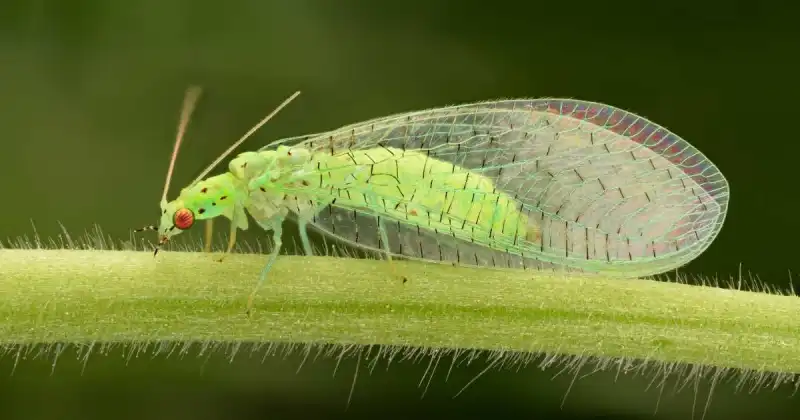
These voracious little predators have a remarkable appetite for aphids, thrips, mites, and other small bugs. Their ferocious jaws make quick work of prey and can help decrease swelling populations looking to take over your garden.
Check Lowest Prices For The Best Sunflower Seeds
Green lacewings are attracted to flowers that provide them with nectar and pollen. Choose a variety of flowering plants such as daisies, cosmos, sunflowers, and yarrow to create an enticing environment. Again, it’s a great idea to provide accessible water sources while preserving natural habitats, like patches of tall grass, where they can shelter. 4
Companion Planting Confuses Pests Away
Practicing companion planting in your garden throws a pleasant surprise at those unwanted garden trespassers. Cultivating particular plants as friendly and beneficial green neighbors can confuse harmful bugs and disrupt their feeding or breeding patterns.
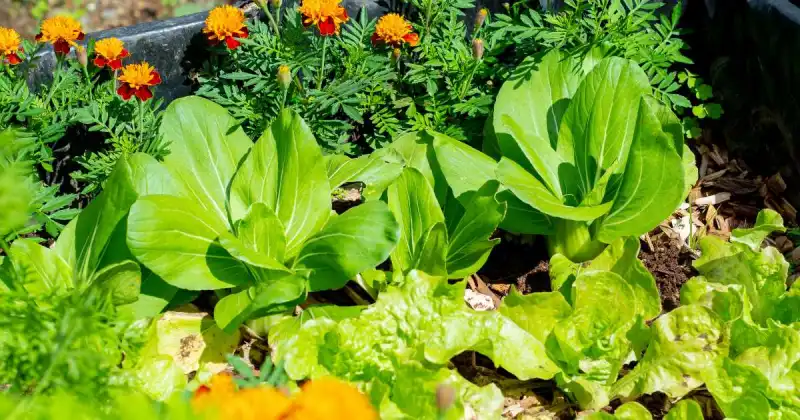
For instance, the all-purpose marigold is like a bonafide bodyguard for your veggies, emitting a scent that deters pests like nematodes. On the other hand, Nasturtiums act as magnets for aphids, those pesky little bugs that love to munch on tender leaves. The vibrant flowers of Nasturtiums attract aphids and act as decoys or trap crops, leading them far from more delicate fruits and veggies you’d instead keep safe. 5
Check Lowest Prices On The Best Herb Seed Mixes
Home Garden Physical Barriers
Physical Barriers are your first line of garden defense. Installing fences and other physical barriers help pests or animals like rabbits, squirrels, and deer avoid accessing your plants and provides a sense of security for your beloved garden.

Choosing The Right Materials For Fencing
Think about the pests you are trying to block from your garden and choose the suitable materials to do the job. For example, strong metal or wire mesh fences are great options for dealing with animals like rabbits or deer. Electric fencing can also work well to scare off larger mammals.
While fences can be highly effective, it is always wise to have additional layers of protection in place. Use supplementary physical barriers such as floating row covers, cloches, or cages for vulnerable plants.
Check Lowest Prices On The Best Garden Row Coves
Row covers, in particular, can serve a dual purpose. Firstly, these covers protect your crops from colder temperatures in fall and keep your veggies shaded in summer. Secondly, their fine cloth mesh keeps out even the most stubborn of tiniest insects, including Colorado potato beetles, carrot flies, cabbage worms, mosquitoes, flies, and Japanese beetles, to name a few. 6
Check out this short video below that explains seven simple methods you can do to decrease the challenges garden pests present. Remember, one of the best and most natural ways to make the practice of gardening easier is to prevent common insect issues before they begin.
Maintain Vegetable Soil And Plant Health
When it comes to pest prevention, a proactive approach that prioritizes soil and plant health is critical. By nurturing your soil and plants, you can create an environment that naturally discourages unwanted trespassers and promotes robust and resilient growth.
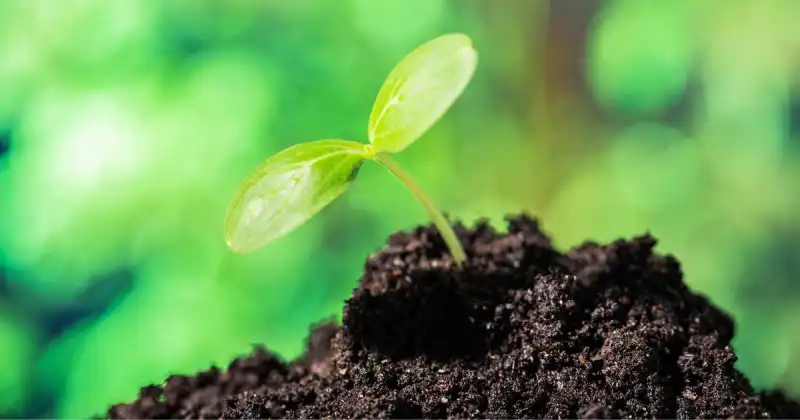
Maintaining Healthy Soil
Healthy soil forms the foundation of a healthy garden. Ensuring your soil is well-balanced and teeming with beneficial microorganisms creates an environment that naturally deters pests.
Transform your garden soil into a nutrient-rich haven by incorporating organic matter, like compost or well-rotted manure, that creates a loamy, well-draining, and aerated environment where it’s easy for plants to grow. Additionally, you can add natural fertilizers such as bone meal, fish emulsion, or seaweed extract to provide essential nutrients your plants will love. 7
Check Lowest Prices On The Best Fish Emulsion
Finally, consider adding organic mulch, like straw or wood chips, to help your soil retain moisture and prevent evaporation. Healthy soil supports vigorous vegetable plant growth and strong immune systems, making them less susceptible to pests and diseases.
Integrated Pest Management (IPM): Prevent, Monitor, Analyze, And Control
Integrated Pest Management (IPM) is an intelligent approach to managing pests in your garden. It combines different methods to prevent, monitor, analyze, and control bugs while reducing the need for chemicals.

Prevent
The first step in IPM is prevention. By creating an environment that lessens the likelihood that pests will cause damage to your crops, your job as a responsible gardener is to make it less inviting for these unwanted trespassers. This includes adopting practices like planting disease-resistant varieties, practicing good sanitation by removing plant debris, and using physical barriers like nets, row covers, or fences to keep pests out.
Read and adhere to spacing instructions on the tag or seed package to offer optimal growing conditions and help your green friends become more resilient to pest attacks. As seeds begin to germinate and mature, be sure to pick a few, a technique called thinning, to prevent overcrowding. As growers, it pains us to yank out any developing plants from our gardens, but in this case, it’s in the best interest of maintaining a healthy food domain.
Monitor
Regularly monitoring your garden is the next important step in IPM. Remember, behind every healthy garden is a mindful and observant grower. Observe signs of pest infestation, such as chewed leaves, foliage discoloration, or wilting. Inspect the upper and lower sides of leaves, stems, and fruits. Consider using traps, sticky cards, or visual inspections to identify pests and monitor their populations. 8
Check Lowest Prices On The Best Sticky Insect Traps
Analyze
Next, it is vital to analyze your garden situation. If pests are causing your plants harm, determine the severity of the infestation and evaluate the potential impact. Identify the species and study its life cycle, behavior, and vulnerabilities. Researching and understanding the pest’s weaknesses can help you develop effective strategies to manage it effectively.
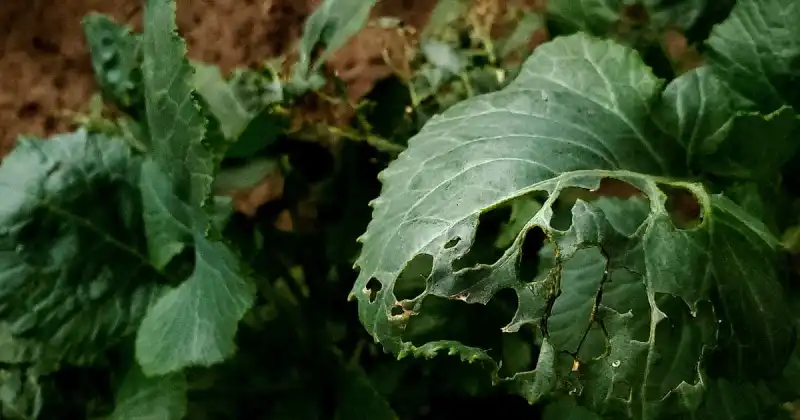
Control
Control measures your focus on reducing pest populations using cultural, mechanical, and biological methods. Cultural methods include crop rotation, companion planting, and selecting pest-resistant plant varieties.
Mechanical methods involve physically removing pests, such as handpicking, handwashing, or using traps, while biological procedures utilize natural predators, like ladybugs or nematodes, to target and control unwanted invaders. 9
Check Lowest Prices On The Best Safety Glasses
Finally, chemical systems are considered a last resort and should only be applied when necessary and if the above options fail to yield results. As with any chemical application, organic or otherwise, it’s best to use low-toxicity options. Be sure to follow safety guidelines and directions while wearing the appropriate safety gear, like long-sleeve shirts, gloves, and glasses.
Keep A Tidy Garden
A tidy garden looks visually appealing and is crucial in pest prevention and overall garden health. By prioritizing garden tidiness, you can create an environment that discourages unwanted trespassers and encourage a thriving and fertile ecosystem.

Remove Fallen Fruits
Promptly remove fruit or vegetables that have fallen from trees, as this can be a magnet for bugs, leading to infestations and further damage to your garden. Rotting or overripe fruit attracts flies, ants, and other insects that can spread diseases or consume other produce growing on the vine. 10
Mulch like wood chips, shredded paper, trellises, and even small dishes are quick and easy options to preserve your grub while preventing creepy crawlies from getting the first bite and potentially moving into your garden.
Check Lowest Prices On The Best Garden Trellis
Composting
If you haven’t started, properly compost or dispose of your fruit or vegetable wastes. Composting is an excellent option for turning kitchen scraps into nutrient-rich compost that can benefit future plantings. Ensure your compost pile is well-maintained, with a proper balance of carbon-rich (browns) and nitrogen-rich (greens) materials. However, if composting is not feasible, dispose of fruit waste in sealed bags or organic waste collection systems according to local regulations.
Check Lowest Prices On The Best Compost Tumblers
Pest Control Product: Chemical Control Options
Chemical options, including insecticides, can be considered regarding pest control. It is important to note that chemicals should be dealt with cautiously and only used as a last resort when other methods have proven ineffective.
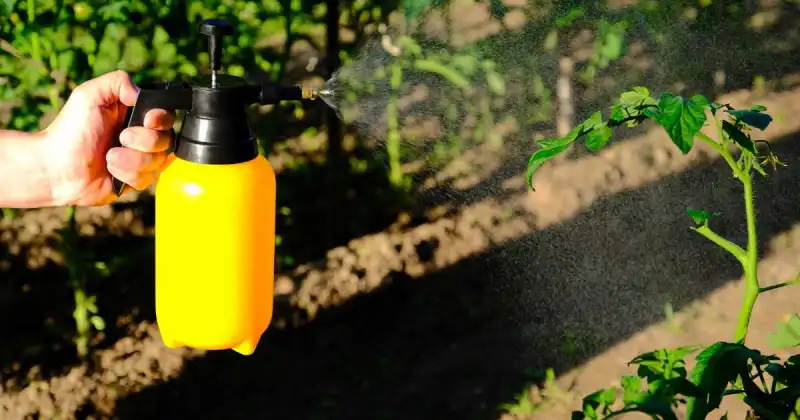
Here are some standard chemical options and their descriptions.
Insecticides: Best Chemical Control Option
Insecticides are chemical formulations specifically designed to kill or control insects. They come in various forms, including sprays, dusts, granules, or systemic treatments. Some common active insecticide ingredients include pyrethroids, neonicotinoids, and organophosphates. 11
These chemicals target pests’ nervous systems or physiological processes, effectively reducing their populations.
Check Lowest Prices On The Best Insecticides
Second, only some chemicals may work adequately. Although the treatment may work on some, it may not work sufficiently to eradicate all. Insects are increasingly becoming adaptable to chemical sprays and should always be used as a last line of defense. 12
Remember, in the garden, hardly any treatment done once solves your issue thoroughly, organic or otherwise. Using several different chemicals with tiered applications is best.
DIY Pesticides With Garlic And Chili
To create a natural DIY plant spray, gather three cloves of garlic, three small pieces of chili, and 1 liter of water. Blend the garlic and chili with water until the liquid is smooth and consistent. If you don’t have a blender, use a mortar and pestle to crush the garlic and chili into a paste or your spoon.
Next, add one tablespoon of dishwashing liquid to the mixture. Let the solution sit for one day or overnight to allow the flavors to infuse. Once ready, you can use this spray on your plants in the morning or evening for optimal results.

Conclusion
Now it’s your turn to put this knowledge into action. Implement these pest control strategies in your vegetable garden. Embrace companion planting, attract beneficial insects, and keep your garden clean and tidy.
The most common and damaging insects include aphids, slugs, snails, whiteflies, and cucumber beetles. However, by taking proper and immediate action while erecting physical barriers like row covers and wire mesh fences, you’ll be well on your way to prioritizing environmentally friendly practices for a healthy and effective garden ecosystem.
Use the Integrated Pest Management (IPM) approach to prevent, monitor, analyze, and control garden invaders from gaining the upper hand in your green space.
You’ll create a thriving and enjoyable home garden by effectively managing pests where you’re plants will be proud to call home. So, let’s get out hands dirty, create a flourishing garden, and keep pests at bay by following these easy steps.
What garden raiders have you successfully conquered recently? Let us know how you showed these unwanted pests who’s boss in the comments below, along with the strategy you used!
SOURCES
- University Of Minnesota, Extension – Aphids In Home Yards And Gardens
- University Of Hawaii, Hilo – Taxonomy: Classification Of Slugs And Snails
- National Library Of Medicine, National Center For Biotechnology Information – Beneficial Insects Deliver Plant Growth-Promoting Bacterial Endophytes Between Tomato Plants
- Cambridge University – Predation Efficiency Of The Green Lacewings Chrysoperla Agilis And C. Mutata Against Aphids And Mealybugs In Sweet Pepper
- National Library Of Medicine, National Center For Biotechnology Information – Companion Plants For Aphid Pest Management
- Almanac – Reasons To Use Row Covers
- Texas A&M University, Extension Gillespie County – Controlling Pests And Preventing Diseases In Your Garden
- Royal Horticultural Society – Controlling Pests And Diseases Without Chemicals
- New England Primate Conservancy – Natural Ways To Manage Gardens And Pests Without Pesticides
- University Of Georgia, Extension – Disease Management In The Home Vegetable Garden
- Texas A&M University, Extension School Integrated Pest Management – Bugs And Basil: Insecticides And Veggies Don’t Always Mix
- Penn State University, Extension – Less Harmful Pesticides

